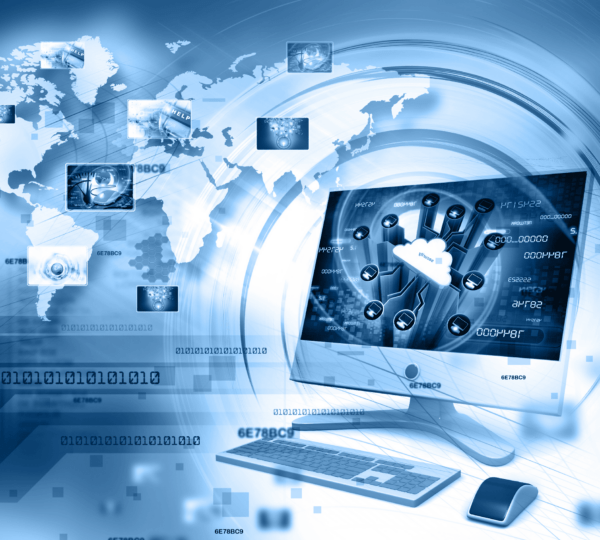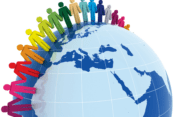
The Importance of Digital Literacy in Today’s World
Back in college, I had volunteered at a local library. One particular day, an elderly man came in, holding a smartphone he’d received as a gift from his grandson. He wanted to learn how to use it. At first, he seemed hesitant, almost embarrassed about his lack of knowledge. “I just want to see my grandson’s photos and send him a text,” he said with a sheepish smile.
Over the next few weeks, we worked together. By the end of our sessions, he wasn’t just sending texts—he was video calling, browsing the internet, and even reading eBooks. His joy was contagious. “It’s like a whole new world has opened up to me,” he said.
That experience stayed with you me because it showed how empowering it can be to understand and use digital tools. In our fast-paced, tech-driven world, digital literacy is no longer a luxury; it’s a necessity. Whether it’s staying connected with loved ones, advancing in your career, or simply navigating daily tasks, being digitally literate opens doors you never knew existed. Let’s take a look into why it’s so important.
What is Digital Literacy?
Digital literacy goes beyond knowing how to use a smartphone or browse the internet. According to the American Library Association, it encompasses the ability to access, evaluate, create, and communicate information using digital tools responsibly. It also involves understanding the ethical and social implications of technology use. In simpler terms, digital literacy is about becoming an informed and capable participant in the digital world.
The popular technology blog TechCrunch notes that digital literacy is akin to a modern-day superpower. Whether it’s applying for a job, accessing healthcare services, or staying connected with loved ones, digital literacy has become a cornerstone of everyday life.
Why Digital Literacy Matters
1. Empowering Individuals in a Digital Economy
Today’s job market requires digital competence. Research from the World Economic Forum reveals that over 90% of jobs now demand basic digital skills, such as using productivity software, navigating online platforms, and interpreting data. For example, a digitally literate worker can effectively use tools like Microsoft Excel or Google Analytics, which are indispensable in fields like marketing, finance, and data analysis.
Conversely, individuals without these skills face limited opportunities and a widening economic gap. According to Harvard Business Review, enhancing digital literacy in underserved communities could significantly boost economic participation and reduce unemployment rates.
2. Fostering Critical Thinking and Information Evaluation
In the age of misinformation, digital literacy is critical for distinguishing fact from fiction. The Pew Research Center reports that 64% of adults struggle to identify fake news online. Digital literacy helps users evaluate sources, recognize bias, and verify information before sharing it.
Educational expert Dr. Renee Hobbs explains, “Digital literacy equips individuals with the critical thinking skills needed to question the credibility of online content, ensuring informed decision-making.”
3. Enhancing Educational Outcomes
For students, digital literacy is a gateway to lifelong learning. Schools worldwide are integrating digital tools to enhance learning experiences. A study by the International Society for Technology in Education (ISTE) found that students proficient in digital tools are more engaged, perform better academically, and are better prepared for future careers.
For instance, platforms like Khan Academy and Coursera have revolutionized access to education. However, without digital literacy, these resources remain inaccessible, widening the education gap.
4. Promoting Social Inclusion
Digital literacy fosters inclusivity by connecting people across geographic, cultural, and economic divides. Social media platforms, online forums, and messaging apps empower individuals to build communities, advocate for causes, and share experiences.
Consider the role of digital literacy during the COVID-19 pandemic. Virtual meetings, online healthcare consultations, and digital payments became lifelines for millions. Those without digital skills faced increased isolation and difficulty accessing essential services.
Building Digital Literacy Skills
1. Start with the Basics
Learning to use devices like smartphones, tablets, and computers is the foundation. Tutorials on platforms like YouTube or Lifehacker offer excellent beginner’s guides.
2. Understand Online Safety
Cybersecurity is a critical aspect of digital literacy. Knowing how to create strong passwords, recognize phishing scams, and use antivirus software protects users from online threats.
3. Develop Media Literacy
Evaluating online content critically is vital. Websites like Snopes and FactCheck.org provide tools to verify information and combat misinformation.
4. Engage with Online Learning Platforms
Platforms like LinkedIn Learning and Codecademy offer courses tailored to various skill levels, helping users advance their digital literacy progressively.
The Role of Organizations in Promoting Digital Literacy
1. Educational Institutions
Schools and universities play a pivotal role. Incorporating digital literacy into curricula ensures students develop these skills early. Partnerships with tech companies can provide access to resources and training programs.
2. Government Initiatives
Governments worldwide are recognizing the importance of digital literacy. For instance, Canada’s Digital Literacy Exchange Program provides funding for organizations to deliver digital skills training to marginalized communities.
3. Corporate Responsibility
Businesses benefit from a digitally literate workforce. Companies like Google and Microsoft offer free training programs, such as Grow with Google, to help individuals acquire digital skills.
Overcoming Barriers to Digital Literacy
Despite its importance, barriers like access to technology, affordability, and fear of the unknown hinder digital literacy efforts. Addressing these challenges requires a multi-faceted approach:
- Improving Access: Expanding broadband infrastructure and providing affordable devices can bridge the digital divide.
- Community Support: Libraries and community centers can offer free digital literacy workshops.
- Inclusive Design: Creating user-friendly technology makes digital tools accessible to all, including older adults and people with disabilities.
The Future of Digital Literacy
As technology continues to evolve, the importance of digital literacy will only grow. Emerging technologies such as artificial intelligence, virtual reality, and the Internet of Things will present new opportunities and challenges. To thrive in this digital age, individuals and societies must prioritize digital literacy and embrace lifelong learning.
Conclusion
As I watched my grandma proudly book her second train ticket online, I realized that digital literacy is not just a skill; it’s empowerment. In a world driven by technology, it’s the key to unlocking opportunities, fostering connections, and navigating the complexities of modern life. Whether you’re a student, a professional, or a retiree, digital literacy is a journey worth embarking on.
Let’s take that step together. Share this article with someone who might benefit from it, or leave a comment below with your own experiences of digital literacy—because in today’s world, knowledge shared is power multiplied.
References
- American Library Association – Digital Literacy Definitions
- TechCrunch – Insights on Digital Literacy
- World Economic Forum – The Future of Jobs Report
- Harvard Business Review – Bridging the Digital Divide
- Pew Research Center – Misinformation and Fake News
- International Society for Technology in Education (ISTE) – Digital Learning
- Dr. Renee Hobbs – Expert Opinions on Media Literacy
- Canadian Digital Literacy Exchange Program – Government Initiatives
- Snopes and FactCheck.org – Combating Misinformation
- Grow with Google – Corporate Training Programs












